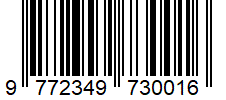Isolation and Characterization of Bacterial Population from Indian Paper Currency
Authors: Parul Gupta
Country: India
Full-text Research PDF File:
View |
Download
Abstract:
Microorganisms are found almost everywhere around us in our environment and are known to spread through contaminated water, food, air and vectors such as fleas, mites, rats, dogs and also through inanimate objects like clothes, utensils, furniture, hand railings or a door knob which we are generally unaware of. Paper currency notes are one of the most commonly exchanged objects and its potential to transmit pathogenic organisms has been well recognized (Khin et al., 1989; Abrams, 1972; Goktas, 1992; Basavarajappa et al., 2005). Earlier studies in many countries have shown that circulating currency bills are most common fomite as it is handled by a large number of people under a variety of personal & environmental conditions (Uneke & Ogbu, 2007; El Dar, 2005; Kalita et al., 2013).
Currency bills are exchanged for goods & services by one & all and a few seconds of money transaction can bring along a whole lot of pathogens. Numerous studies have well documented that paper currency acts as a vehicle to spread bacteria and other microorganisms and can accommodate a variety of contaminants for long periods (Lamichhane et al., 2009; Angelakis et al., 2014; Wamae, 2009).
Keywords:
Paper Id: 1652
Published On: 2017-12-15
Published In: Volume 5, Issue 6, November-December 2017
Cite This: Isolation and Characterization of Bacterial Population from Indian Paper Currency - Parul Gupta - IJIRMPS Volume 5, Issue 6, November-December 2017.





 All research papers published in this journal/on this website are openly accessible and licensed under
All research papers published in this journal/on this website are openly accessible and licensed under 